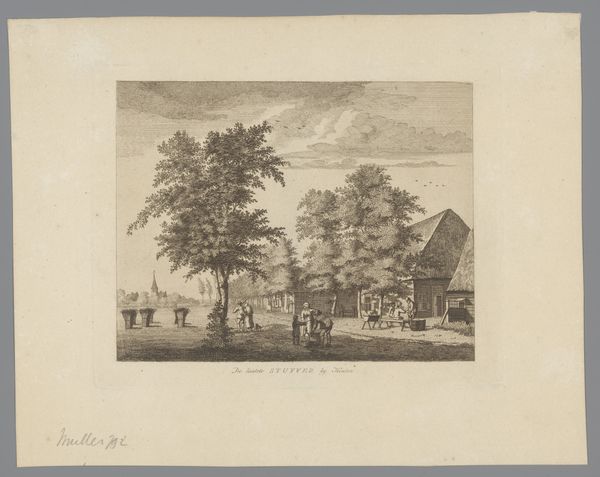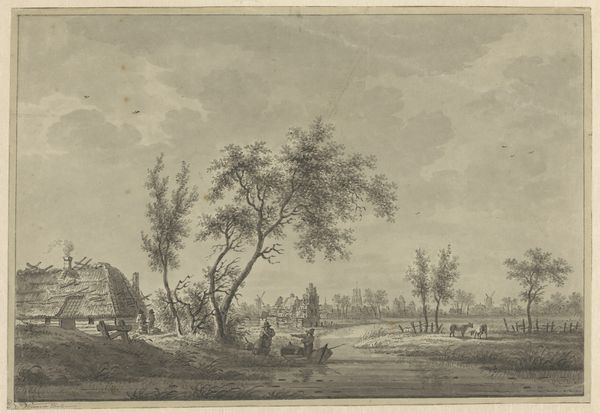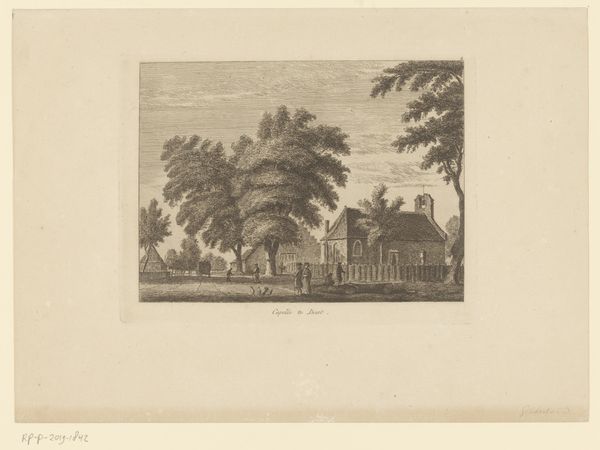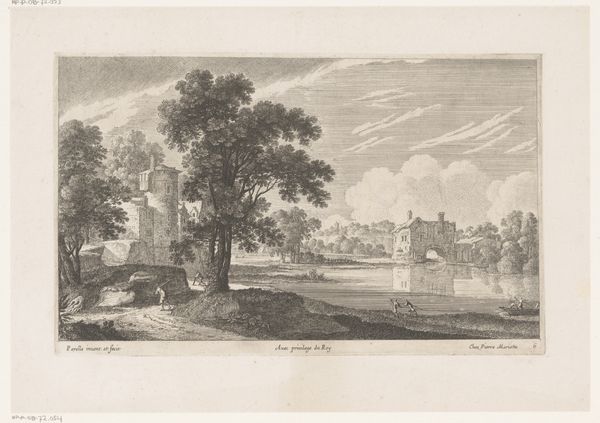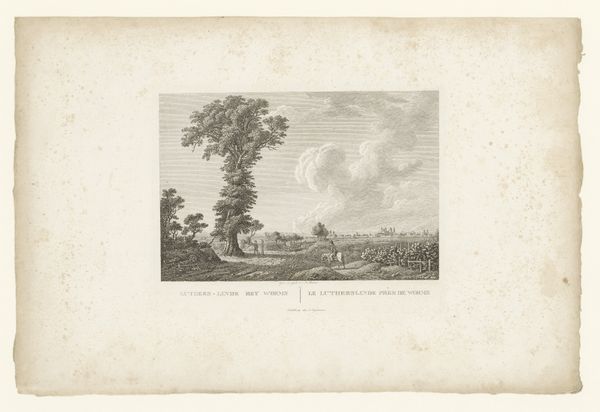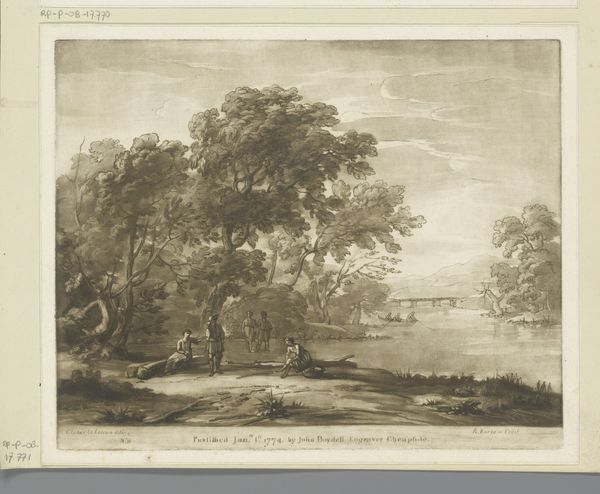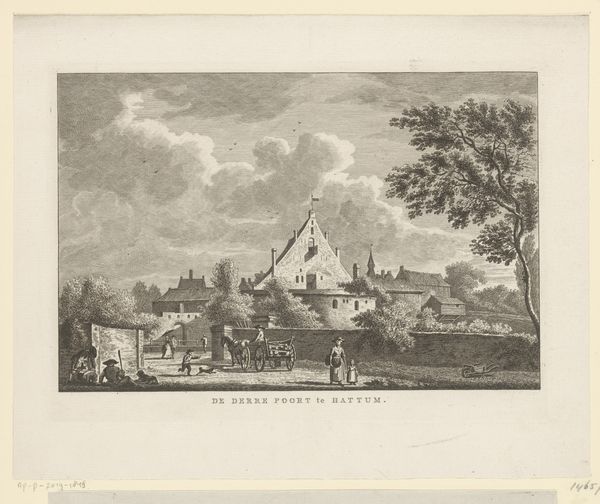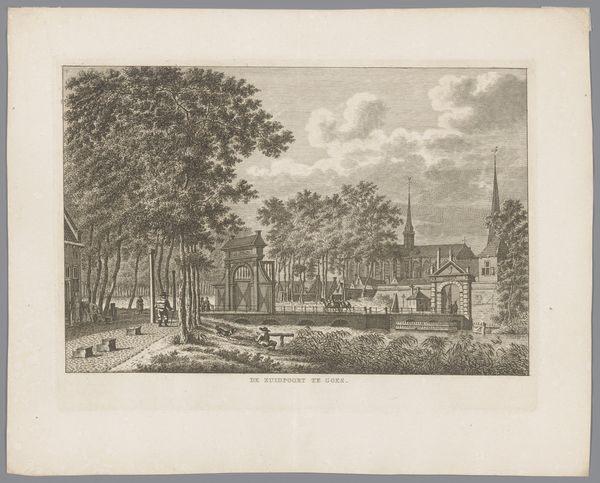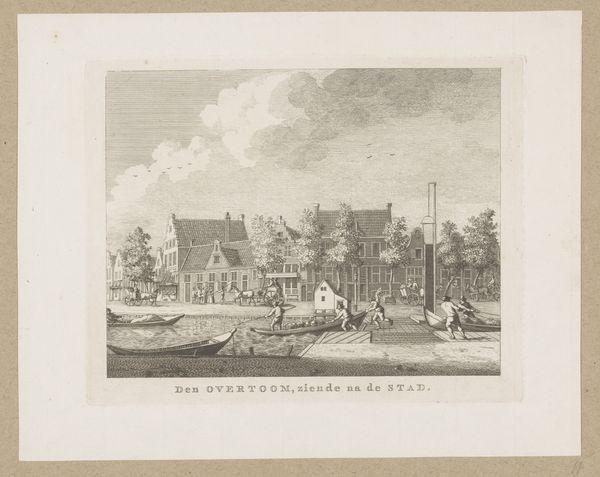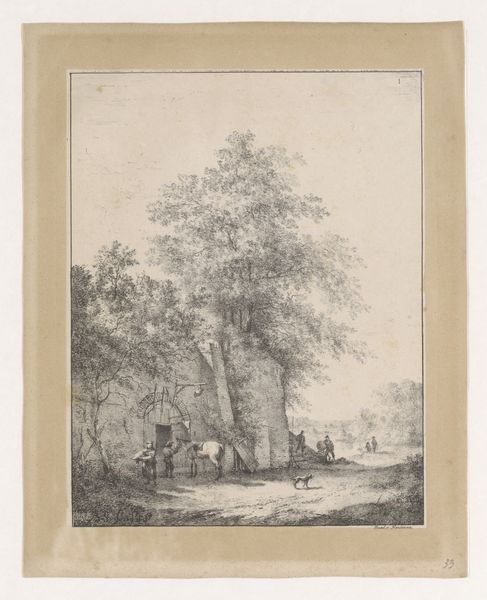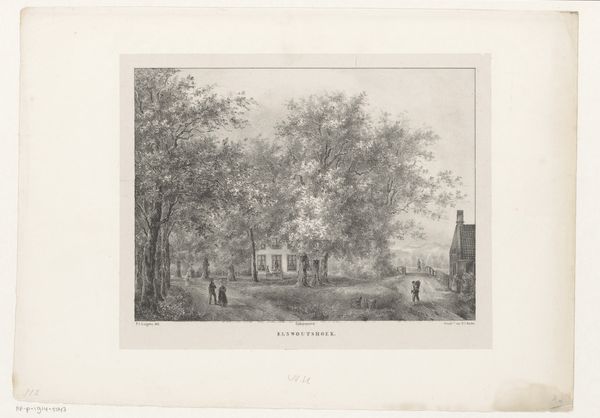
print, engraving
#
aged paper
#
toned paper
#
light pencil work
#
neoclassicism
# print
#
old engraving style
#
landscape
#
15_18th-century
#
engraving
Dimensions: height 168 mm, width 208 mm
Copyright: Rijks Museum: Open Domain
Editor: This is "Gezicht op Krimpen aan de Lek," made between 1769 and 1805 by Jan Evert Grave. It's an engraving, so lines upon lines, but with such a peaceful landscape effect. What stands out to you about this piece? Curator: I see a meticulously crafted image, of course, but it's also a product of labor. Think of the engraver’s hand, the time spent incising those lines into the plate. Each mark represents a conscious decision, a physical action, transforming a blank surface into a view of Krimpen aan de Lek. Consider, too, the social context. Who was this made for, and why? Editor: So it's not just the idyllic scene, but also the work itself? Were prints like this common? Curator: Exactly! It was likely made for a middle-class consumer interested in owning a piece of the Dutch landscape. This wasn’t some grand history painting commissioned by royalty. This was reproducible, part of a market of images available for purchase and display in homes. Consider the paper, too: its source, the labor involved in its manufacture, and how that affected the price and accessibility of the image. Editor: That changes how I see it completely. I hadn't considered the layers of production. Curator: And what about the dissemination of these images? They could be easily distributed and replicated. What impact did this wider distribution have? Editor: It must have changed the access to art as a whole. And if the images themselves circulated widely, that really starts to detach them from a sole artistic origin. The means of production democratizes representation. Curator: Precisely. Analyzing art through the lens of materiality and labor unveils so much about its function within a particular society and historical moment. Editor: It's more than just aesthetics; it's about understanding the broader network of production and consumption, and the changing definition of "art." Thank you, I will think of it differently from now on.
Comments
No comments
Be the first to comment and join the conversation on the ultimate creative platform.
